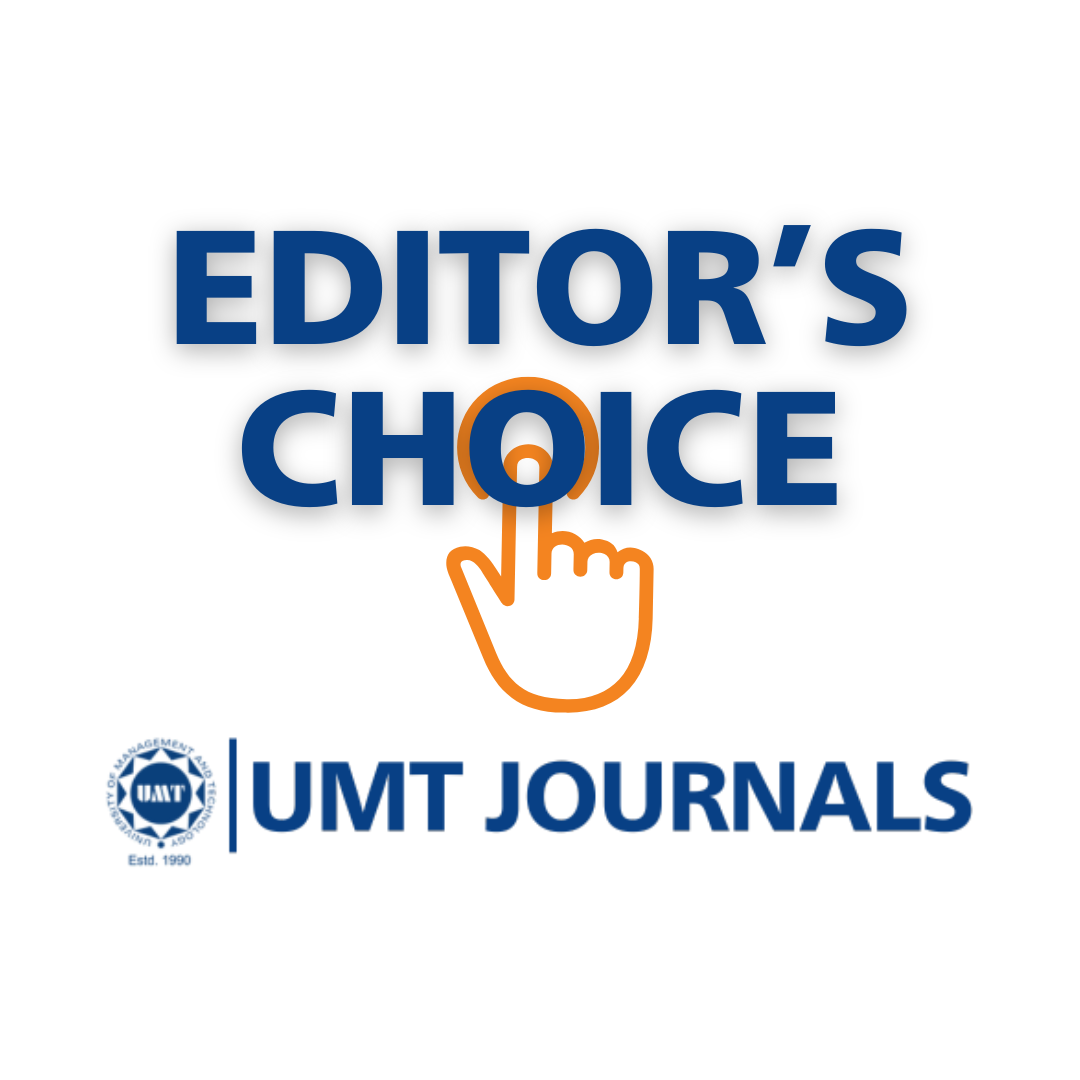Cloning, Amplified Expression and Bioinformatics Analysis of a Putative Nucleobase Cation Symporter-1 (NCS-1) Protein Obtained from Rhodococcus erythropolis
Abstract
 Abstract Views: 231
Abstract Views: 231
The Rhodococcus erythropolis gene DYC18_RS18060 (1437 bp) putatively codes for a secondary transporter of the Nucleobase Cation Symporter-1 (NCS-1) protein family (478 amino acids). The DYC18_RS18060 gene was successfully cloned from R. erythropolis genomic DNA with the addition of EcoRI and PstI restriction sites at the 5′ and 3′ ends, respectively, using PCR technology. The amplified gene was introduced into IPTG-inducible plasmid pTTQ18, immediately upstream of the sequence coding for a His6-tag. The construct was transformed into Escherichia coli BL21(DE3). Then, the amplified expression of the DYC18_RS18060-His6 protein was achieved with detection through SDS-PAGE and western blotting. Computational methods predicted that DYC18_RS18060 has a molecular weight of 51.1 kDa and isoelectric point of 6.58. The protein was predicted to be hydrophobic in nature (aliphatic index 113.24, grand average of hydropathicity 0.728). It was also predicted to form twelve transmembrane spanning α-helices, with both N- and C-terminal ends at the cytoplasmic side of the membrane. Database sequence similarity searches and phylogenetic analysis suggested that the substrate of DYC18_RS18060 could be cytosine; however, this was uncertain based on the comparison of residues involved in substrate binding in experimentally characterised NCS-1 proteins. The current study lays the foundations for further structural and functional studies of DYC18_RS18060 and other NCS-1 proteins.
Keywords: bioinformatics analysis, gene cloning, membrane topology, NCS-1 family, protein expression, transport protein
Copyright(c) The Authors
Downloads
References
de Koning H, Diallinas G. Nucleobase transporters (review). Mol Membr Biol. 2000;17(2):75-94. https://doi.org/10.1080/09687680050117101
Pantazopoulou A, Diallinas G. Fungal nucleobase transporters. FEMS Microbiol Rev. 2007;31(6):657-675. https://doi.org/10.1111/j.1574-6976.2007.00083.x
Saier MH Jr, Yen MR, Noto K, Tamang DG, Elkan C. The Transporter Classification Database: recent advances. Nucleic Acids Res. 2009;37:D274-D278. https://doi.org/10.1093/nar/gkn862
Weyand S, Ma P, Saidijam M, Baldwin J, et al. The Nucleobase-Cation-Symport-1 family of membrane transport proteins. In: Handbook of Metalloproteins. John Wiley and Sons; 2010. https://doi.org/10.1002/0470028637.met268
Witz S, Panwar P, Schober M, Deppe J, Pasha FA, Lemieux MJ, and Möhlmann T. Structure-function relationship of a plant NCS1 member - homology modeling and mutagenesis identified residues critical for substrate specificity of PLUTO, a nucleobase transporter from Arabidopsis. PLoS One. 2014;9(3):e91343. https://doi.org/10.1371/journal.pone.0091343
Krypotou E, Evangelidis T, Bobonis J, Pittis AA, Gabaldón T, Scazzocchio C, Mikros E, Diallinas G. Origin, diversification and substrate specificity in the family of NCS1/FUR transporters. Mol Microbiol. 2015;96(5):927-950. https://doi.org/10.1111/mmi.12982
Ma P, Patching SG, Ivanova E, et al. Allantoin transport protein, PucI, from Bacillus subtilis: evolutionary relationships, amplified expression, activity and specificity. Microbiol. 2016;162(5):823-836.
Sioupouli G, Lambrinidis G, Mikros E, Amillis S, Diallinas G. Cryptic purine transporters in Aspergillus nidulans reveal the role of specific residues in the evolution of specificity in the NCS1 family. Mol Microbiol. 2017;103(2):319-32. https://doi.org/10.1111/mmi.13559
Patching SG. Recent developments in Nucleobase Cation Symporter-1 (NCS1) family transport proteins from bacteria, archaea, fungi and plants. J Biosci. 2018;43(4):797-815. https://doi.org/10.1007/s12038-018-9780-3
Suzuki S, Henderson PJ. The hydantoin transport protein from Microbacterium liquefaciens. J Bacteriol. 2006;188(9):3329-3336.
Jackson SM, Ivanova E, Calabrese AN, et al. Structure, Substrate Recognition, and Mechanism of the Na+-Hydantoin Membrane Transport Protein, Mhp1. InEncyclopedia of Biophysics 2018 (pp. 1-12). Springer.
Patching SG. Synthesis, NMR analysis and applications of isotope-labelled hydantoins. J Diagnos Imaging in Therapy. 2017;4(1):3-26. http://dx.doi.org/10.17229/jdit.2017-0225-026
Weyand S, Shimamura T, Yajima S, et al. Structure and molecular mechanism of a nucleobase-cation-symport-1 family transporter. Sci. 2008;322(5902):709-713.
Shimamura T, Weyand S, Beckstein O, et al. Molecular basis of alternating access membrane transport by the sodium-hydantoin transporter Mhp1. Sci. 2010;328(5977):470-473.
Simmons KJ, Jackson SM, Brueckner F, et al. Molecular mechanism of ligand recognition by membrane transport protein, Mhp1. EMBO J. 2014;33(16):1831-1844. https://doi.org/10.15252/embj.201387557
Calabrese AN, Jackson SM, Jones LN, et al. Topological dissection of the membrane transport protein Mhp1 derived from cysteine accessibility and mass spectrometry. Anal Chem. 2017;89(17):8844-8852. https://doi.org/10.1021/acs.analchem.7b01310
Weyand S, Shimamura T, Beckstein O, et al. The alternating access mechanism of transport as observed in the sodium-hydantoin transporter Mhp1. J Synchrotron Radiat. 2011;18(1):20-23. https://doi.org/10.1107/S0909049510032449
Adelman JL, Dale AL, Zwier MC, Bhatt D, Chong LT, Zuckerman DM, Grabe M. Simulations of the alternating access mechanism of the sodium symporter Mhp1. Biophys J. 2011;101(10):2399-4207. https://doi.org/10.1016/j.bpj.2011.09.061
Shi Y. Common folds and transport mechanisms of secondary active transporters. Annu Rev Biophys. 2013;42:51-72.
Kazmier K, Sharma S, Islam SM, Roux B, Mchaourab HS. Conformational cycle and ion-coupling mechanism of the Na+/hydantoin transporter Mhp1. Proc Natl Acad Sci U S A. 2014;111(41):14752-14757. https://doi.org/10.1073/pnas.1410431111
Li J, Zhao Z, Tajkhorshid E. Locking two rigid-body bundles in an outward-facing conformation: The ion-coupling mechanism in a LeuT-fold transporter. Sci Rep. 2019;9(1):19479. https://doi.org/10.1038/s41598-019-55722-6
Meshkin H, Zhu F. Toward convergence in free energy calculations for protein conformational Changes: A case study on the thin gate of Mhp1 transporter. J Chem Theory Comput. 2021;17(10):6583-6596. https://doi.org/10.1021/acs.jctc.1c00585
Mourad GS, Tippmann-Crosby J, Hunt KA, et al. Genetic and molecular characterization reveals a unique nucleobase cation symporter 1 in Arabidopsis. FEBS Lett. 2012;86(9):1370-1378. https://doi.org/10.1016/j.febslet.2012.03.058
Schein JR, Hunt KA, Minton JA, Schultes NP, Mourad GS. The nucleobase cation symporter 1 of Chlamydomonas reinhardtii and that of the evolutionarily distant Arabidopsis thaliana display parallel function and establish a plant-specific solute transport profile. Plant Physiol Biochem. 2013;70:52-60. https://doi.org/10.1016/j.plaphy.2013.05.015
Minton JA, Rapp M, Stoffer AJ, Schultes NP, Mourad GS. Heterologous complementation studies reveal the solute transport profiles of a two-member nucleobase cation symporter 1 (NCS1) family in Physcomitrella patens. Plant Physiol Biochem. 2016;100:12-17. https://doi.org/10.1016/j.plaphy.2015.12.014
Rapp M, Schein J, Hunt KA, Nalam V, Mourad GS, Schultes NP. The solute specificity profiles of nucleobase cation symporter 1 (NCS1) from Zea mays and Setaria viridis illustrate functional flexibility. Protoplasma. 2016;253(2):611-623.
Ahmad I, Ma P, Nawaz N, Sharples DJ, Henderson PJF, Patching SG. Cloning, amplified expression, functional characterisation and purification of Vibrio parahaemolyticus NCS1 cytosine transporter VPA1242 (Chapter 8). In: Patching SG, editor. A Closer Look at Membrane Proteins. Independent Publishing Network. 2020;241-67.
Danielsen S, Boyd D, Neuhard J. 1995. Membrane topology analysis of the Escherichia coli cytosine permease. Microbiol. 1995;141(11):2905-2913. https://doi.org/10.1099/13500872-141-11-2905
Ahmad I, Nawaz N, Darwesh NM, ur Rahman S, Mustafa, MZ, Khan SB, Patching SG. Overcoming challenges for amplified expression of recombinant proteins using Escherichia coli. Prot Expr Purif. 2018;144:12-18. https://doi.org/10.1016/j.pep.2017.11.005
Singh SK, Pal A. Biophysical approaches to the study of LeuT, a prokaryotic homolog of neurotransmitter sodium symporters. Methods Enzymol. 2015;557:167-198. https://doi.org/10.1016/bs.mie.2015.01.002
Bai X, Moraes TF, Reithmeier RAF. Structural biology of solute carrier (SLC) membrane transport proteins. Mol Membr Biol. 2017;34(1-2):1-32. https://doi.org/10.1080/09687688.2018.1448123
Kazmier K, Claxton DP, Mchaourab HS. Alternating access mechanisms of LeuT-fold transporters: trailblazing towards the promised energy landscapes. Curr Opin Struct Biol. 2017;45:100-108. https://doi.org/10.1016/j.sbi.2016.12.006
Razavi AM, Khelashvili G, Weinstein H. How structural elements evolving from bacterial to human SLC6 transporters enabled new functional properties. BMC Biol. 2018;16(1):31. https://doi.org/10.1186/s12915-018-0495-6
Schumann T, König J, Henke C, et al. Solute carrier transporters as potential targets for the treatment of metabolic disease. Pharmacol Rev. 2020;72(1):343-379. https://doi.org/10.1124/pr.118.015735
Wang WW, Gallo L, Jadhav A, Hawkins R, Parker CG. The druggability of solute carriers. J Med Chem. 2020;63(8):3834-3867. https://doi.org/10.1021/acs.jmedchem.9b01237
Pizzagalli MD, Bensimon A, Superti-Furga G. A guide to plasma membrane solute carrier proteins. FEBS J. 2021;288(9):2784-2835. https://doi.org/10.1111/febs.15531
Stark MJ. Multicopy expression vectors carrying the lac repressor gene for regulated high-level expression of genes in Escherichia coli. Gene. 1987;51:255-267. https://doi.org/10.1016/0378-1119(87)90314-3
Ward A, et al. (2000) The amplified expression, identification, purification, assay, and properties of hexahistidine-tagged bacterial membrane transport proteins. Membrane Transport: A Practical Approach, ed Baldwin SA (Oxford Univ Press, Oxford) 141–166.
Gasteiger E, Hoogland C, Gattiker A, et al. Protein identification and analysis tools on the ExPASy Server. In: Walker JM (ed) The proteomics protocols handbook. Humana Press. 2005; 571-607.
Krogh A, Larsson B, von Heijne G, Sonnhammer EL. Predicting transmembrane protein topology with a hidden Markov model: application to complete genomes. J Mol Biol. 2001;305:567-580. https://doi.org/10.1006/jmbi.2000.4315
Bernsel A, Viklund H, Hennerdal A, Elofsson A. TOPCONS: consensus prediction of membrane protein topology. Nucleic Acids Res. 2009;37(Web Server issue):W465-W468. https://doi.org/10.1093/nar/gkp363
Waterhouse A, Bertoni M, Bienert S, et al. SWISS-MODEL: homology modelling of protein structures and complexes. Nucleic Acids Res. 2018;46(W1):W296-W303. https://doi.org/10.1093/nar/gky427
Sievers F, Wilm A, Dineen D, et al. Fast, scalable generation of high-quality protein multiple sequence alignments using Clustal Omega. Mol Syst Biol. 2011;7:539. https://doi.org/10.1038/msb.2011.75
Letunic I, Bork P. Interactive tree of life (iTOL) v3: an online tool for the display and annotation of phylogenetic and other trees. Nucleic Acids Res. 2016;44:W242-W245. https://doi.org/10.1093/nar/gkw290
Brown CJ, Trieber C, Overduin M. Structural biology of endogenous membrane protein assemblies in native nanodiscs. Curr Opin Struct Biol. 2021;69:70-77. https://doi.org/10.1016/j.sbi.2021.03.008
Lemieux MJ, Overduin M. Structure and function of proteins in membranes and nanodiscs. Biochim Biophys Acta Biomembr. 2021;1863(1):183445. https://doi.org/10.1016/j.bbamem.2020.183445
Mouhib M, Benediktsdottir A, Nilsson CS, Chi CN. Influence of detergent and lipid composition on reconstituted membrane proteins for structural studies. ACS Omega. 2021;6(38):24377-24381. https://doi.org/10.1021/acsomega.1c02542
Strickland KM, Neselu K, Grant AJ, Espy CL, McCarty NA, Schmidt-Krey I. Reconstitution of detergent-solubilized membrane proteins into proteoliposomes and nanodiscs for functional and structural studies. Methods Mol Biol. 2021;2302:21-35.
Hammerschmid D, van Dyck JF, Sobott F, Calabrese AN. Interrogating membrane protein structure and lipid interactions by native mass spectrometry. Methods Mol Biol. 2020;2168:233-261.
Wu M, Lander GC. How low can we go? Structure determination of small biological complexes using single-particle cryo-EM. Curr Opin Struct Biol. 2020;64:9-16. https://doi.org/10.1016/j.sbi.2020.05.007
Yeh V, Goode A, Bonev BB. Membrane protein structure determination and characterisation by solution and solid-state NMR. Bio. 2020;9(11):396. https://doi.org/10.3390/biology9110396
Kwan TOC, Reis R, Siligardi G, Hussain R, Cheruvara H, Moraes I. Selection of Biophysical Methods for Characterisation of Membrane Proteins. Int J Mol Sci. 2019;20(10):2605. https://doi.org/10.3390/ijms20102605
Beriashvili D, Schellevis RD, Napoli F, Weingarth M, Baldus M. High-resolution studies of proteins in natural membranes by solid-state NMR. J Vis Exp. 2021;(169). https://doi.org/10.3791/62197.PMID:33749679
Günsel U, Hagn F. Lipid Nanodiscs for High-Resolution NMR Studies of Membrane Proteins. Chem Rev. 2021. https://doi.org/10.1021/acs.chemrev.1c00702
Januliene D, Moeller A. Single-Particle Cryo-EM of Membrane Proteins. InStructure and Function of Membrane Proteins 2021 (pp. 153-178). Humana, New York, NY.
Weissenberger G, Henderikx RJM, Peters PJ. Understanding the invisible hands of sample preparation for cryo-EM. Nat Methods. 2021;18(5):463-471. https://doi.org/10.1038/s41592-021-01130-6
Gordon E, Horsefield R, Swarts HG, de Pont JJ, Neutze R, Snijder A. Effective high-throughput overproduction of membrane proteins in Escherichia coli. Protein Expr Purif. 2008;62(1):1-8. https://doi.org/10.1016/j.pep.2008.07.005
Rath A, Deber CM. Correction factors for membrane protein molecular weight readouts on sodium dodecyl sulfate-polyacrylamide gel electrophoresis. Anal Biochem. 2013;434(1):67-72. https://doi.org/10.1016/j.ab.2012.11.007
Saidijam M, Patching SG. Amino acid composition analysis of secondary transport proteins from Escherichia coli with relation to functional classification, ligand specificity and structure. J Biomol Struct Dyn. 2015;33(10):2205-20. https://doi.org/10.1080/07391102.2014.998283
von Heijne G. Membrane protein structure prediction. Hydrophobicity analysis and the positive-inside rule. J Mol Biol. 1992;225(2):487-494. https://doi.org/10.1016/0022-2836(92)90934-C
Copyright (c) 2021 Irshad Ahmad, Youri Lee, Nighat Nawaz, Rizwan Elahi, Israr Ali Khan, Muhammad Zahid Mustafa, Simon G Patching

This work is licensed under a Creative Commons Attribution 4.0 International License.
BSR follows an open-access publishing policy and full text of all published articles is available free, immediately upon publication of an issue. The journal’s contents are published and distributed under the terms of the Creative Commons Attribution 4.0 International (CC-BY 4.0) license. Thus, the work submitted to the journal implies that it is original, unpublished work of the authors (neither published previously nor accepted/under consideration for publication elsewhere). On acceptance of a manuscript for publication, a corresponding author on the behalf of all co-authors of the manuscript will sign and submit a completed the Copyright and Author Consent Form.










